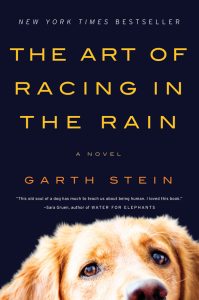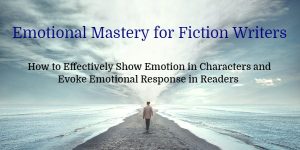Entice Your Readers with “Surprisingness”
This post originally ran on Helping Writers to Become Authors in August, 2019.
Have you ever read a book for a second, third, even tenth time—all to experience the emotion the story evokes? Clearly the elements of the story aren’t a surprise. You know exactly what to expect.
Literary agent Donald Maass says that emotions are most effectively evoked by trickery—when readers aren’t noticing we are manipulating them. He says “Artful fiction surprises readers with their own feelings.”
I can honestly say that, as a reader, the best novels do just that. They evoke such emotions from me—unexpected emotions—that I am stunned by my own reactions.
This doesn’t mean a writer’s key objective with any novel is to accomplish this at every turn. This is a masterful thing to do, but we writers want to evoke emotion throughout our novels—big, small, expected, and unexpected. Even when we know what emotion is being stirred in us, when we see what’s coming, it doesn’t reduce the impact.
The Net of “Surprisingness”
C. S. Lewis said that people go back and reread certain stories over and over not to be surprised, because the reader knows what is going to happen, but for the “surprisingness.” It’s the quality of unexpectedness that delights us. Like children who want the same story read over and over. The fact that they know what is about to happen makes them even more excited. We savor the richness of the story again and again.
Lewis calls the plot of the story “the net whereby to catch something else.” That “something” is what he calls “much more than a state or quality.” Real life, he says, is a series of events, but if that is all it is, there is no deeper meaning or feeling of adventure. That net of the story, for a little while, transcends us, and entangles us in the wonder and awe of living. That is what Lewis says the best stories will do.
When we can catch readers in a net of emotions—especially unexpected and surprising ones—that’s powerful magic.
Research shows when someone is surprised, dopamine increases and emotions intensify up to 400 percent. Heightened attention ensues, and so does extreme curiosity, in an attempt to figure out what is happening during the surprise.
Surprise also causes a shift—it forces a change in perspective. Your reader is hyper alert, curious, in the moment, a perfect state to tell the unexpected emotion and have the reader feel it.
Unexpected Emotions
When I began to read the chapter in The Art of Racing in the Rain in which Enzo, the beloved narrator dog, is dying, I just knew what was going to happen to me, what I was about to get into. Most people relate to losing a pet. Most people share that universal affection for sweet animal companions. [NOTE: Some spoilers follow]
While I have met many readers who confessed they wept their heart out reading this joyously sad scene, I imagine some readers weren’t moved at all. But I bet almost everyone who read that book felt something. You don’t bother to read a novel told in “first person dog POV” if you don’t like dogs. And it says something that this novel was on the NYT’s best-seller list for 156 weeks.
But here are two things I want to say about that passage: First, the key to its brilliance lies not only in the universal resonance of “it’s so horrible to lose someone (person or animal) you love,” or the wonderful writing. I hinted at the masterful execution of the scene with the words joyously sad. I chose that phrase to make a point: when unexpected emotions are evoked in us, it awes us.
Pay attention to that.
You wouldn’t expect a scene that has you watching a dog die, one that breaks your heart, to make you so happy at the same time. Even laughing. That’s what makes that scene so brilliant. Because the whole time I was crying in anguish, I was laughing with joy. It was absolutely authentic in every way. And utterly surprising as much as it was totally expected.
Don’t Try to Name Emotions
I can’t put a name to the composite emotion I felt. I can toss around a whole lot of words. But, to me, trying to name complex emotions is like trying to catch the wind with chopsticks. The secret lies in Hemingway’s brilliant advice: “Find what gave you the emotion . . . then write it down, making it clear so the reader will see it too and have the same feeling as you had.”
Think of it this way. You might not know what to name a particular color shade, but if you have a few tubes of paint and play around with the quantities, you just might be able to re-create the color perfectly. That’s what you need to do with words on your palette to create the same color emotion.
Second thing I want to say about the passage in The Art of Racing in the Rain: there is something to be said about building intimacy with characters. It might be hard to evoke emotion in readers for a character they have only just been introduced to. So having this most powerful emotional scene placed near the end of the book, when readers are fully committed to Enzo and Denny, packs the biggest emotional punch.
 If you haven’t read The Art of Racing in the Rain, I highly recommend it, to understand the power of “surprisingness.” Those of you, however, who have read the book, may want to read this post and pay attention to the incongruous, unexpected emotions you feel as you go through the powerful passage at the climax of the story. Note the universal feelings the old dog Enzo expresses that make you think “Me too!”
If you haven’t read The Art of Racing in the Rain, I highly recommend it, to understand the power of “surprisingness.” Those of you, however, who have read the book, may want to read this post and pay attention to the incongruous, unexpected emotions you feel as you go through the powerful passage at the climax of the story. Note the universal feelings the old dog Enzo expresses that make you think “Me too!”
Garth Stein does a brilliant job of not only conveying Enzo’s complex emotions, which are both expected and unexpected, but evoking so many emotions in the reader.
Finding a way to surprise your character and your reader adds microtension to your pages, which sparks those emotions in your readers that keep them engaged, whether it be something positive like amusement or negative like outrage or fear. Know how you want your readers to feel and lead them there.
Yes, readers love to be surprised. The unexpected surprises us. It might scare us, delight us, or move us profoundly. Yet, often a character’s reaction to a situation is wholly predictable and still it moves us deeply. Consider just about any love story that ends in happily ever after. Completely predictable endings, and all the feelings—for readers and characters—that go with it. Predictability really has nothing to do with emotional impact. It’s how the story is shown that matters. How those emotions are conveyed in a way that are believable, masterful, and moving.
Have you read any novels lately that have moved you by their surprisingness? Share in the comments!
 And be sure to check out my online video course Emotional Mastery for Fiction Writers. It has more than six hours of video instruction and forty+ passages from novels examined to help you become an Emotion Master!
And be sure to check out my online video course Emotional Mastery for Fiction Writers. It has more than six hours of video instruction and forty+ passages from novels examined to help you become an Emotion Master!
If you don’t move readers with your writing, you fail as a writer. It’s that simple. Learn the skills needed to evoke emotion from your readers and show emotion effectively and believably in your characters.











A very useful and timely article as I, for the umpteenth time, edit the sequel for my next book. Thanks!
I totally bawled my eyes out when I read that book. The dog narrator never said he was sad, but the emotion was definitely there in how he felt and with how he viewed the surrounding situation. I remember when I was first told that my mother had brain cancer. Rather than tell people how shocked I was at the news, I usually tell them how I was taking a walk in the sunshine when I was interrupted by my phone ringing. My intent was to chat with my mom as I walked. But when she gave the news, I stopped dead in my tracks. The entire world around me disappeared. I go on with describing rather than telling how I felt and I can tell when the person I’m talking to has experienced something similar. Powerful stuff. Thanks for this reminder on show vs tell. I’d like a better understanding, though, of what you mean by surprisingness. More examples, maybe?
Hi Dawn, this is a tidbit from my extensive online video course, and there is an entire module on this topic, with many passages and exercises to help you do this. Also the module of microtension ties in, because showing conflicting, unexpected words and concepts on every page adds that surprising feel. Hope you’ll check out the course!